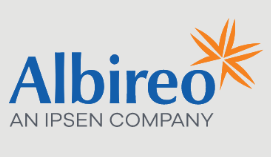Lessons Learned from the Intense Back-and-Forth Over a $1B Acquisition

Ron Cooper, former CEO, Albireo; board member, Generation Bio
Since 2018, about 90 biotech companies have been acquired for more than $500 million. That’s only about 15 to 20 companies per year, a tiny fraction of the approximately 10,000 biotechnology companies around the world.
I was privileged to be part of one of those transactions, the sale of Albireo Pharma to Ipsen in January for $952 million upfront, plus contingent value rights that could push the value to well over $1 billion.
The acquisition will help more patients around the world gain faster access to the innovative medicines Albireo developed. It’s a win for those patients – mostly children with rare diseases – as well as their families, our investors, and the people at both companies.
That’s the triumphant narrative common in M&A press releases. But a lot of things happened behind the scenes to get there. Here are a few lessons I picked up along the way.
Brief Background
Albireo Pharma started as a spinoff from AstraZeneca in Sweden. When I joined the company in 2015, we were privately held with 10 employees, we had great science and an ambitious goal: to design breakthrough drugs for children and bring hope to families.
But like many other biotechs, the development cycle was ahead of the funding cycle. That’s one way of saying our product candidates were advancing rapidly in the clinic, gathering the evidence needed to succeed in the marketplace, but investors weren’t yet convinced to provide the support we needed.
Out of necessity, we decided to divest or shelve some of our R&D programs and put most of our remaining resources behind odevixibat for rare pediatric liver diseases.
In the early days in the mid-2010s, there were some weeks where we nearly ran out of cash. At times, some people questioned our unconventional strategies such as seeking feedback on our phase III trial from FDA and EMA before the phase II study was completed and conducting a single Phase III study with two different primary endpoints. And even though the biotech financial markets were generally trending upward most of these years, the markets always pressured us to be at our absolute best to secure every dollar of funding.
By 2022, we’d cleared many of the hurdles inherent to development-stage biotech. We’d grown to ~200 employees globally. We created four different medications for liver diseases. The first to receive regulatory clearance in the US and Europe was odevixibat (brand name Bylvay) a bile acid transport inhibitor. It was approved and marketed in the U.S. and Europe for a rare pediatric liver disease for which there was no other FDA-approved medical treatment.
That was a publicly visible triumph, but behind the scenes, 2022 was a tumultuous year. We were focused on launching Bylvay globally and advancing two new clinical stage assets when we were first approached to sell the company in February.
We rejected multiple initial offers either because the price was too low or we didn’t think the timing was right for the Company. We finally agreed to undergo a period of diligence and finalized a counterproposal. We thought this was a good match and were hopeful the deal would go through. But in May, the potential acquiror’s board decided to walk away.
It was a shock and big disappointment on many levels.
After this exhausting process which ultimately led nowhere, we decided to get back to focusing on what we do best — developing and delivering important medicines for liver disease that would increase value for Albireo shareholders.
Surprisingly, it didn’t take long for multiple different suitors to come calling again. We went through an intensive due diligence and negotiation with three of these companies up until just before the JP Morgan Healthcare Conference in January 2023.
Our board ultimately determined Ipsen’s global R&D and commercial capabilities, together with the terms Ipsen provided, presented the best option for all stakeholders. We announced the merger agreement and offer on the opening morning of the JP Morgan event in San Francisco. The sale was formally completed on March 3, 2023.
It was a tough decision to sell the company. It meant breaking up a highly committed A-Team and changing the nature of the close ties we had developed with ourselves, patients, families and their clinicians. But we knew that Ipsen could accelerate access to Bylvay and ensure that the three new product candidates would be maximized.
A Wild Ride
Biotech is not for the faint of heart. Ditto for commercializing medicines globally, taking a company public and navigating a complicated acquisition process It takes extreme dedication, and grit, as a company to get through these challenges. Culture gets tested by these normal events in corporate life – a strong culture stays together, while weaker ones can come unglued.
We had a few things going for us that helped us through the hard times. We believed in the science. We believed in our team. And we believed in our unrelenting commitment to bring hope to the patients and families we served.
Did we do everything right? Absolutely not. In the first potential deal, I engaged too many people too early and failed to adequately discern alignment with the acquiring firm’s philosophy. (More on that later.)
Everyone makes mistakes, but I wanted our team to learn from ours and not to repeat the same ones over and over. When something was clearly working well, we sought to turn it into a standard procedure, a hallmark of our culture.
While no transaction is the same, here are seven strategies I’d repeat if I sold another company:
Lessons Learned from Albireo’s Sale
- Balance Stakeholder Impact – Selling a company requires satisfying multiple constituencies who might, at times, have conflicting goals. An acquisition won’t work unless each stakeholder sees and understands the benefit. For Albireo, that meant taking into consideration the desires of patients, investors, employees and board members. At the right time in the process, I engaged with each stakeholder directly; listening, explaining, listening some more, and making course corrections along the way. Another stakeholder to consider, which often doesn’t get as much attention, is the local community. I wanted our transaction to benefit our local community of Boston, which supported our success in many ways. While it is difficult to benefit a local community within the context of a standard merger deal, I used the Life Science Cares Shares Program to donate a portion of my personal proceeds to outstanding local nonprofits that make Boston a better place to live and work. Thinking carefully about each constituency resulted in a more detailed gameplan for negotiations, and ensured strong support from each party who had a stake in the outcome. Result: A better gameplan + bolstered buy-in.
- Seek and Heed Advice – We ensured our banking, legal and financial modeling advisors were top-notch, and engaged consultants for expertise in targeted areas. Their advice was invaluable every step of the way. Result: Better decisions, fewer mistakes.
- Keep Your Circle Small – As the original suitor sized us up, and we considered a sale to them, I can see in hindsight that I involved too many players too early. This created a large distraction while we needed to focus on our patients and business. Our team members were focused on what was the right thing to do for Albireo but they are human beings and it was challenging not to think about the potential personal impact. When the first deal did not work out, there was a significant toil from the emotional rollcoaster. I learned this lesson the second time around, and kept a tighter circle on who was privy to information. When Ipsen and others approached us, I only informed a handful of key leaders. It was hard for these senior executives to manage a dual workload – doing their normal day jobs to advance the work of Albireo, while also doing all the required work to prepare for a potential acquisition in secret — but it allowed the majority of employees to focus on executing their personal deliverables. We kept our eye on the ball the second time around. Result: More patients got access to our important medicines, even as we navigated the sale.
- Play Your Position – The initial small circle of internal people handling the competitive bidding process for Albireo included me, the CEO, and our C-level executives overseeing finance, legal, business and science. We agreed on our roles, both formal and informal. And we stuck to them. Result: We moved fast, collaborated well, and didn’t get in each other’s way.
- Ensure Alignment – With the first potential transaction in the first quarter of 2022, I didn’t engage deeply with leaders high enough in the potential acquiror’s organization to discern alignment in business philosophy. But I learned from that mistake. In the second process, I got to know the top leaders at the bidders, including Ipsen, with a focus on connecting business beliefs and practices to help ensure a good fit. Result: A sale that benefits both organizations, patients, employees and investors.
- Focus the Team –During the due diligence period, the potential acquirer will bombard your company with literally thousands of information requests, sometimes haphazardly with emails at all hours of the day and night. We protected the team by creating a process to manage incoming requests, and push back on unreasonable inquiries, timelines and duplication. Result: Minimized burn-out and effective information flows.
- Have Fun Along the Way – The biotech business is intense – especially when your team cares so much about patients. Long days, long weeks, long months. The added work required to navigate a sale only increases the pressure. In this context, I learned the added value of personal relationships, humor and even a bit of silliness. Examples: I sent personal cards for their birthday to each team member, or for seemingly small, but important, achievements. I regularly reached out to each diligence team member just to check in. And our town halls became more than just performance updates – we had crazy costumes, fun music videos and lots of shout-outs to bring a little levity to taxing times. Result: Extreme focus, loyalty and talent retention, despite the challenging work.
Grateful for the Experience
If you’re exploring or navigating a biotech sale, I hope these lessons learned can help. The journey isn’t easy, but when you find the right acquiring partner, it’s worth it. We know our drug will able to reach the vast majority of the approximately 100,000 patients out there around the world who might benefit from it. Our shareholders, employees, and our community are sharing in the financial rewards.
I would not trade my Albireo experience for anything. It’s been a true gift to build an amazing team and work with wonderful parents, clinicians, investors and bankers to serve our patients. And with Ipsen’s acquisition, I’m confident that the work will continue. A large percentage of the Albireo employees plan to stay with Ipsen, while the ones who leave will have freedom to pursue other life interests and career opportunities on their own terms.
I look forward to my next leadership role and if I’m fortunate, I may get to apply these lessons learned again. In the meantime, I am taking a six-month “sabbatical” to enjoy my family, catch up on life and get ready for my next challenge.



